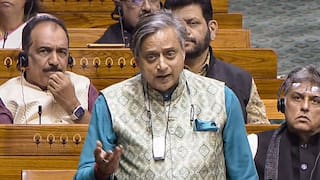New Pension Scheme Vs Old Pension Scheme. Which One To Choose. Read Here
The OPS is a pension-oriented scheme, the NPS is an investment-cum-pension scheme where a part of the money is invested in the stock market

A raging political debate regarding old pension scheme (OPS) and new pension scheme (NPS) is going on for months. Several states have decided to migrate back to the old pension scheme. States like Rajasthan, Chhattisgarh, and Jharkhand have already implemented the old pension scheme and discontinued the NPS.
Way back in December 2003, the BJP-led NDA government had discontinued the old pension scheme and had launched the NPS as a substitute for the old pension scheme. The NPS took effect on April 1, 2004.
The Congress in its manifesto for the upcoming Gujarat Assembly elections made 11 key promises, including implementation of old pension scheme in the state.
A federation of central government employees’ unions has also written to the Cabinet secretary to restore the OPS, saying that the NPS is a disaster for retiring employees in their old age.
Both the schemes, the OPS and NPS, are pension schemes. However, the two are different from each other. While the OPS is a pension-oriented scheme, the NPS is an investment-cum-pension scheme where a part of the money is invested in the stock market, thus generating more returns. The returns in NPS are not guaranteed and depend on the performance of the asset allocation by the subscriber based on his/her risk taking capability during the employment tenure.
The key differences between OPS and NPS are in the following:
OPS
- The old pension scheme used to give a fixed monthly income to government employees after retirement.
- It provided 50 per cent of the last drawn salary as a pension.
- No tax benefits are applicable to the employees.
- Income under the old pension scheme doesn't attract tax.
- Only government employees are eligible to receive a pension under the OPS after retirement.
NPS
- The NPS is also meant for government employees. However, private sector employees can also join NPS.
- In NPS, employees contribute money from their salary during their employment tenure. The amount is invested in market-linked instruments.
- Investment in NPS up to Rs 1.50 lakh is tax-deductible under Section 80C of the Income Tax Act, 1961. Additional annual investments up to Rs 50,000 are tax-deductible under Section 80CCD (1B) of the Act.
- After retirement, an employee can withdraw a part of the pension amount in a lump sum. According to the rule, 60 per cent of the corpus on maturity is tax-free, while the remaining 40 per cent is taxable and must be invested in annuities for a regular income or pension.
- NPS is mandatorily applicable to central government employees except armed forces recruited on or after January 1, 2004. State governments also follow the NPS for their employees.
- Under the NPS, employees make a monthly contribution at the rate of 10 per of their salary. A matching contribution is also made by the government. Starting April 1, 2019, the employer’s contribution rate has been enhanced to 14 per cent for the central government employees.
- All citizens between 18 and 65 years are eligible for NPS.






































